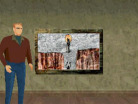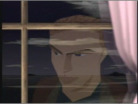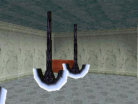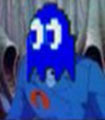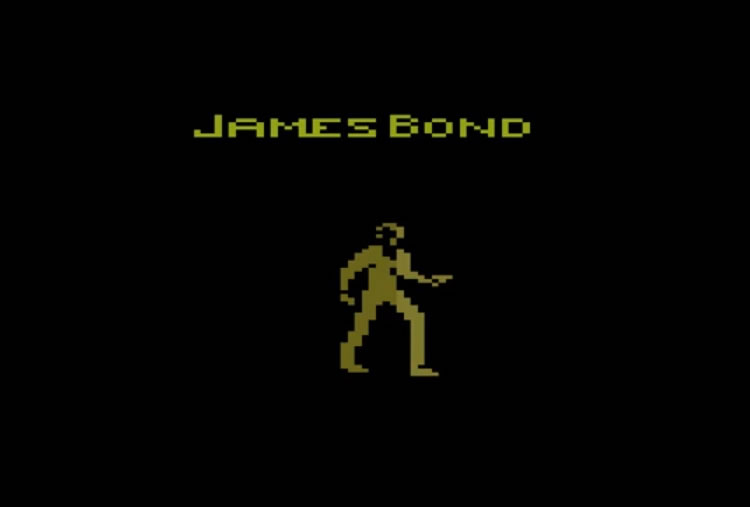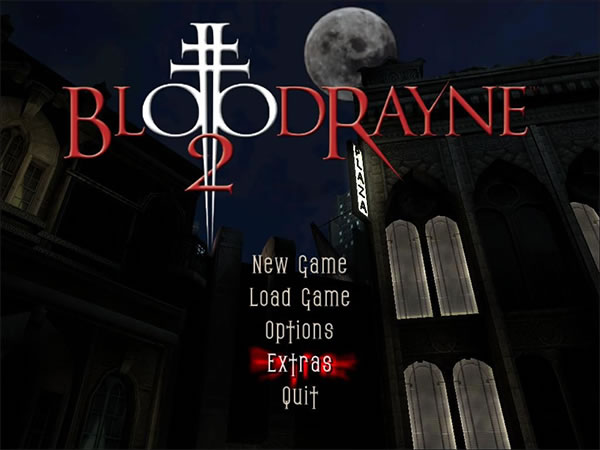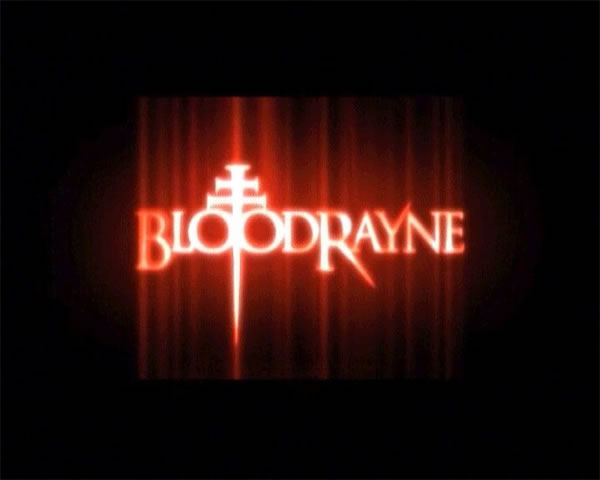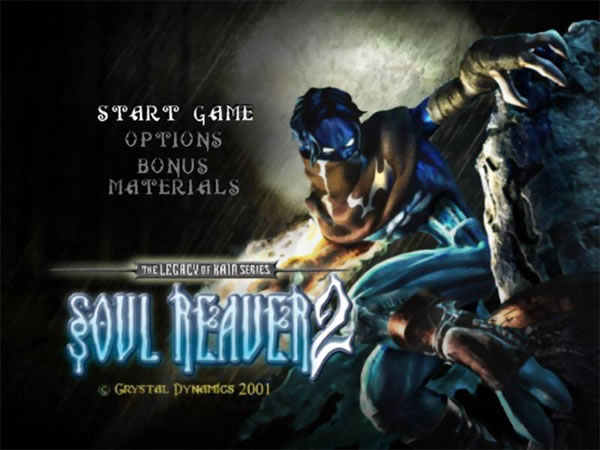- CLASSIC MAGAZINES
- REVIEW CREW
A show recapping what critics thought back
when classic games first came out! - NEXT GENERATION'S BEST & WORST
From the worst 1-star reviews to the best
5-stars can offer, this is Next Generation! - NINTENDO POWER (ARCHIVE)
Experience a variety of shows looking at the
often baffling history of Nintendo Power! - MAGAZINE RETROSPECTIVE
We're looking at the absolutely true history of
some of the most iconic game magazines ever! - SUPER PLAY'S TOP 600
The longest and most ambitious Super NES
countdown on the internet! - THEY SAID WHAT?
Debunking predictions and gossip found
in classic video game magazines! - NEXT GENERATION UNCOVERED
Cyril is back in this spin-off series, featuring the
cover critic review the art of Next Generation! - HARDCORE GAMER MAGAZING (PDF ISSUES)
Download all 36 issues of Hardcore Gamer
Magazine and relive the fun in PDF form!
- REVIEW CREW
- ELECTRONIC GAMING MONTHLY
- ELECTRONIC GAMING MONTHLY RANKS
From Mario to Sonic to Street Fighter, EGM
ranks classic game franchises and consoles! - ELECTRONIC GAMING MONTHLY BEST & WORST
Counting down EGM’s best and worst reviews
going year by year, from 1989 – 2009! - ELECTRONIC GAMING BEST & WORST AWARDS
11-part video series chronicling the ups and
downs of EGM’s Best & Worst Awards!
- ELECTRONIC GAMING MONTHLY RANKS
- GAME HISTORY
- GAME OVER: STORY BREAKDOWNS
Long-running series breaking down game
stories and analyzing their endings! - A BRIEF HISTORY OF GAMING w/ [NAME HERE]
Real history presented in a fun and pithy
format from a variety of game historians! - THE BLACK SHEEP
A series looking back at the black sheep
entries in popular game franchises! - INSTANT EXPERT
Everything you could possibly want to know
about a wide variety of gaming topics! - FREEZE FRAME
When something familiar happens in the games
industry, we're there to take a picture! - I'VE GOT YOUR NUMBER
Learn real video game history through a series
of number-themed episodes, starting at zero! - GREAT MOMENTS IN BAD ACTING
A joyous celebration of some of gaming's
absolute worst voice acting!
- GAME OVER: STORY BREAKDOWNS
- POPULAR SHOWS
- DG NEWS w/ LORNE RISELEY
Newsman Lorne Riseley hosts a regular
series looking at the hottest gaming news! - REVIEW REWIND
Cyril replays a game he reviewed 10+ years
ago to see if he got it right or wrong! - ON-RUNNING FEUDS
Defunct Games' longest-running show, with
editorials, observations and other fun oddities! - DEFUNCT GAMES QUIZ (ARCHIVE)
From online quizzes to game shows, we're
putting your video game knowledge to the test!- QUIZ: ONLINE PASS
Take a weekly quiz to see how well you know
the news and current gaming events! - QUIZ: KNOW THE GAME
One-on-one quiz show where contestants
find out if they actually know classic games! - QUIZ: THE LEADERBOARD
Can you guess the game based on the classic
review? Find out with The Leaderboard!
- QUIZ: ONLINE PASS
- DEFUNCT GAMES VS.
Cyril and the Defunct Games staff isn't afraid
to choose their favorite games and more! - CYRIL READS WORLDS OF POWER
Defunct Games recreates classic game
novelizations through the audio book format!
- DG NEWS w/ LORNE RISELEY
- COMEDY
- GAME EXPECTANCY
How long will your favorite hero live? We crunch
the numbers in this series about dying! - VIDEO GAME ADVICE
Famous game characters answer real personal
advice questions with a humorous slant! - FAKE GAMES: GUERILLA SCRAPBOOK
A long-running series about fake games and
the people who love them (covers included)! - WORST GAME EVER
A contest that attempts to create the worst
video game ever made, complete with covers! - LEVEL 1 STORIES
Literature based on the first stages of some
of your favorite classic video games! - THE COVER CRITIC
One of Defunct Games' earliest shows, Cover
Critic digs up some of the worst box art ever! - COMMERCIAL BREAK
Take a trip through some of the best and
worst video game advertisements of all time! - COMIC BOOK MODS
You've never seen comics like this before.
A curious mix of rewritten video game comics!
- GAME EXPECTANCY
- SERIES ARCHIVE
- NINTENDO SWITCH ONLINE ARCHIVE
A regularly-updated list of every Nintendo
Switch Online release, plus links to review! - PLAYSTATION PLUS CLASSIC ARCHIVE
A comprehensive list of every PlayStation
Plus classic release, including links! - RETRO-BIT PUBLISHING ARCHIVE
A regularly-updated list of every Retro-Bit
game released! - REVIEW MARATHONS w/ ADAM WALLACE
Join critic Adam Wallace as he takes us on a
classic review marathon with different themes!- DEFUNCT GAMES GOLF CLUB
Adam Wallace takes to the links to slice his way
through 72 classic golf game reviews! - 007 IN PIXELS
Adam Wallace takes on the world's greatest spy
as he reviews 15 weeks of James Bond games! - A SALUTE TO VAMPIRES
Adam Wallace is sinking his teeth into a series
covering Castlevania, BloodRayne and more! - CAPCOM'S CURSE
Adam Wallace is celebrating 13 days of Halloween
with a line-up of Capcom's scariest games! - THE FALL OF SUPERMAN
Adam Wallace is a man of steel for playing
some of the absolute worst Superman games! - THE 31 GAMES OF HALLOWEEN
Adam Wallace spends every day of October afraid
as he reviews some of the scariest games ever! - 12 WEEKS OF STAR TREK
Adam Wallace boldly goes where no critic has
gone before in this Star Trek marathon!
- DEFUNCT GAMES GOLF CLUB
- DAYS OF CHRISTMAS (ARCHIVE)
Annual holiday series with themed-episodes
that date all the way back to 2001!- 2015: 30 Ridiculous Retro Rumors
- 2014: 29 Magazines of Christmas
- 2013: 29 Questionable Power-Ups of Christmas
- 2012: 34 Theme Songs of Christmas
- 2011: 32 Game Endings of Christmas
- 2010: 31 Bonus Levels of Christmas
- 2009: 30 Genres of Christmas
- 2008: 29 Controls of Christmas
- 2007: 34 Cliches of Christmas
- 2006: 33 Consoles of Christmas
- 2005: 32 Articles of Christmas
- 2004: 31 Websites of Christmas
- 2003: 29 Issues of Christmas
- 2002: 28 Years of Christmas
- 2001: 33 Days of Christmas
- NINTENDO SWITCH ONLINE ARCHIVE
- REVIEW ARCHIVE
- FULL ARCHIVE
Doctor Hauzer
Gregory House, Doogie Howser, and Professor Hauzer are all fictional doctors with surnames that mean exactly the same thing-house. In the case of the 3DO game, Doctor Hauzer, the title is an economic one; the Middle-German word for "house" applies not only to the antagonist, but to his malicious residence as well.
It is 1952. You are an investigator visiting Doctor Hauzer's domicile of doom to find out what has become of the missing archeologist. From his journals, you learn that Hauzer was one of those guys so devoted to his work that he takes it home with him. In fact, he built his very home over an important archeological sight just to claim it all for himself. After years of excavating the premises, he grows increasingly obsessed with a deity named Kellbim, and as Hauzer's monomania grows, so too do his illusions of self-importance. He sacrifices his interns to his newly discovered God and leaves some of their bodies strewn about his house. Apparently Hauzer did not specialize in Eastern cultures otherwise he'd know that corpses in the den make for bad feng shui.
The programmers for Doctor Hauzer must have been a quick study when they saw Infograme's amazing 3D feat presented by Alone in the Dark in 1992. They took the wonderfully eerie atmosphere of that title and removed its biggest shortcoming—enemies. The enemy battles in the original Alone in the Dark are awkward, slow, and difficult. Clearly, 3D gaming was not ready for meaningful and fair combat. So, Doctor Hauzer is smart not to have any ghouls, zombies, or any globular monstrosities of any kind. It is you versus the house.
Dr. Hauzer's house is more dangerous than a dilapidated high-rise built from balsa wood and asbestos. Heavy chandeliers wait for your footsteps, doors lead to bottomless pits, and a booby-trapped grandfather clock clocks you in the forehead with an arrow. In order to succeed, you will need to die more than a few times, but the death cinemas are entertaining enough so that you don't mind this. An unlimited save feature also helps to relieve any potential frustration. Saving will make you a braver explorer, so save often.
Doctor Hauzer is an interesting stepping stone into the foray of survival horror genre, but it is nowhere near as terrifying as modern games. While its spartan and stark graphics help to lend the game its creepy mood, don't expect any pillow-biting moments. It would anachronistic and unfair to evaluate it based on experiences playing more terrifying titles Silent Hill or Resident Evil.
Rather than comparing this game to other games, it may be most fruitful to look to other forms of media for influence. For example, in one room swinging axe pendulums block you path and this scene is reminiscent of imagery from Edgar Allan Poe's "The Pit and the Pendulum". Another Poe story "The Fall of the House of Usher" also shares characteristics with the game in that both contain a house that behaves like a sentient being determined to rid itself of its inhabitants. Another room in Hauzer's house seems to make reference to Indiana Jones and the Last Crusade; a picture of a man walking over a cliff reveals the vital clue to crossing a hole in the floor. The painting looks as if it were directly taken out of Henry Jones' Grail Diary. One floor below this, you must outrun a large rolling boulder. When you combine these moments with the fact that you are researching an archaeologist, it is clear that the programmers looked the Jones trilogy for inspiration.
As for gameplay, the character moves remarkably well and with the ability to toggle between three camera angles (first person, third person, and overhead) traversing obstacles is often a matter of proper perspective. The biggest problem with the game overall is its dependence on the resurrection fallacy (when a game mandates failure in order to succeed), but again the limitless save feature allows you to make several leaps of faith with confidence. Navigating the house requires a bit of memorization and some puzzle solving, and even though the game's text is mostly in Japanese, the puzzles are usually logic-based and visual and do not require knowing the language.
The music and sound effects are wonderfully synced to the game's action. The soundtrack is subtle and works similarly to Mark Snow's piano work in the X-Files series. At points, it even has a bendy, Doppler-effected quality that heightens the player's tension, and though you know that no creatures will pop out of a window or cupboard, the music will convince you otherwise. The sound of your footsteps echo convincingly in the largely empty house. If you listen carefully, the sounds you feet make will change based on whether your walking over solid ground or over a trap door. This attention to detail makes playing Doctor Hauzer worthwhile.
Doctor Hauzer is not the best survival horror adventure, but it is definitely a formative step in the creation of a genre. If you like Resident Evil but hate all those damn zombies, then you might enjoy playing this one. Just watch your step.
It is 1952. You are an investigator visiting Doctor Hauzer's domicile of doom to find out what has become of the missing archeologist. From his journals, you learn that Hauzer was one of those guys so devoted to his work that he takes it home with him. In fact, he built his very home over an important archeological sight just to claim it all for himself. After years of excavating the premises, he grows increasingly obsessed with a deity named Kellbim, and as Hauzer's monomania grows, so too do his illusions of self-importance. He sacrifices his interns to his newly discovered God and leaves some of their bodies strewn about his house. Apparently Hauzer did not specialize in Eastern cultures otherwise he'd know that corpses in the den make for bad feng shui.
The programmers for Doctor Hauzer must have been a quick study when they saw Infograme's amazing 3D feat presented by Alone in the Dark in 1992. They took the wonderfully eerie atmosphere of that title and removed its biggest shortcoming—enemies. The enemy battles in the original Alone in the Dark are awkward, slow, and difficult. Clearly, 3D gaming was not ready for meaningful and fair combat. So, Doctor Hauzer is smart not to have any ghouls, zombies, or any globular monstrosities of any kind. It is you versus the house.
Dr. Hauzer's house is more dangerous than a dilapidated high-rise built from balsa wood and asbestos. Heavy chandeliers wait for your footsteps, doors lead to bottomless pits, and a booby-trapped grandfather clock clocks you in the forehead with an arrow. In order to succeed, you will need to die more than a few times, but the death cinemas are entertaining enough so that you don't mind this. An unlimited save feature also helps to relieve any potential frustration. Saving will make you a braver explorer, so save often.
Doctor Hauzer is an interesting stepping stone into the foray of survival horror genre, but it is nowhere near as terrifying as modern games. While its spartan and stark graphics help to lend the game its creepy mood, don't expect any pillow-biting moments. It would anachronistic and unfair to evaluate it based on experiences playing more terrifying titles Silent Hill or Resident Evil.
Rather than comparing this game to other games, it may be most fruitful to look to other forms of media for influence. For example, in one room swinging axe pendulums block you path and this scene is reminiscent of imagery from Edgar Allan Poe's "The Pit and the Pendulum". Another Poe story "The Fall of the House of Usher" also shares characteristics with the game in that both contain a house that behaves like a sentient being determined to rid itself of its inhabitants. Another room in Hauzer's house seems to make reference to Indiana Jones and the Last Crusade; a picture of a man walking over a cliff reveals the vital clue to crossing a hole in the floor. The painting looks as if it were directly taken out of Henry Jones' Grail Diary. One floor below this, you must outrun a large rolling boulder. When you combine these moments with the fact that you are researching an archaeologist, it is clear that the programmers looked the Jones trilogy for inspiration.
As for gameplay, the character moves remarkably well and with the ability to toggle between three camera angles (first person, third person, and overhead) traversing obstacles is often a matter of proper perspective. The biggest problem with the game overall is its dependence on the resurrection fallacy (when a game mandates failure in order to succeed), but again the limitless save feature allows you to make several leaps of faith with confidence. Navigating the house requires a bit of memorization and some puzzle solving, and even though the game's text is mostly in Japanese, the puzzles are usually logic-based and visual and do not require knowing the language.
The music and sound effects are wonderfully synced to the game's action. The soundtrack is subtle and works similarly to Mark Snow's piano work in the X-Files series. At points, it even has a bendy, Doppler-effected quality that heightens the player's tension, and though you know that no creatures will pop out of a window or cupboard, the music will convince you otherwise. The sound of your footsteps echo convincingly in the largely empty house. If you listen carefully, the sounds you feet make will change based on whether your walking over solid ground or over a trap door. This attention to detail makes playing Doctor Hauzer worthwhile.
Doctor Hauzer is not the best survival horror adventure, but it is definitely a formative step in the creation of a genre. If you like Resident Evil but hate all those damn zombies, then you might enjoy playing this one. Just watch your step.
HOME |
CONTACT |
NOW HIRING |
WHAT IS DEFUNCT GAMES? |
NINTENDO SWITCH ONLINE |
RETRO-BIT PUBLISHING
Retro-Bit |
Switch Planet |
The Halcyon Show |
Same Name, Different Game |
Dragnix |
Press the Buttons
Game Zone Online | Hardcore Gamer | The Dreamcast Junkyard | Video Game Blogger
Dr Strife | Games For Lunch | Mondo Cool Cast | Boxed Pixels | Sega CD Universe | Gaming Trend
Game Zone Online | Hardcore Gamer | The Dreamcast Junkyard | Video Game Blogger
Dr Strife | Games For Lunch | Mondo Cool Cast | Boxed Pixels | Sega CD Universe | Gaming Trend
Copyright © 2001-2025 Defunct Games
All rights reserved. All trademarks are properties of their respective owners.
All rights reserved. All trademarks are properties of their respective owners.






